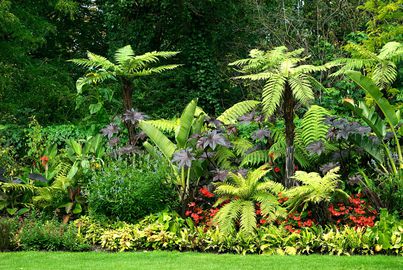

The Amsterdam Hortus Botanicus is one of the oldest botanical gardens in the world, dating as far back as 1638. Originally it served as a herb garden for doctors and apothecaries. The hexagonal pavilion was built in the late 1600s and the entrance gate in the early 1700s. The Orangery was constructed in 1875, and the Palm House and Hugo de Vries Laboratory - both representative of the Amsterdam School expressionist architecture - date to 1912 and 1915 respectively. The HortusBotanicus went almost bankrupt when the University of Amsterdam terminated the funding in 1987, but a group of private supporters prevented it from being closed. Today the Hortus is funded by the Amsterdam City Council. The Hortus is home to over 4,000 different species of plants, which is about 1% of all plant species growing on Earth. The plants grow in the Hortus as they would in nature. Frequently they are cultivated from seeds collected in nature. The Hortus contributes to the conservation of the species by acting as a gene bank of sorts. Information, such as the plants’ Dutch and Latin names, natural distribution, and location where they were found is gathered and then stored in a database. Each plant is assigned a unique reference number which can be used for searching through the database. Visitors to the Hortus will find a sign with the Latin name of the plant and its reference number next to each plant. Located in the city center of the Dutch capital, the garden is a beautiful, tranquil and intimate place in the midst of a bustling city. The Hortus is open from 10 am to 5 pm daily and in July and August on Sundays until 7 pm.